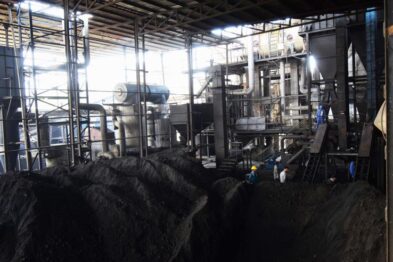A little before 9 a.m. on Tuesday, an engineer named Matthew Gallelli crouched on the deck of a decommissioned aircraft carrier in San Francisco Bay, pulled on a pair of ear protectors, and flipped a switch.
A few seconds later, a device resembling a snow maker began to rumble, then produced a great and deafening hiss. A fine mist of tiny aerosol particles shot from its mouth, traveling hundreds of feet through the air.
It was the first outdoor test in the United States of technology designed to brighten clouds and bounce some of the sun’s rays back into space, a way of temporarily cooling a planet that is now dangerously overheating. The scientists wanted to see whether the machine that took years to create could consistently spray the right size salt aerosols through the open air, outside of a lab.
If it works, the next stage would be to aim at the heavens and try to change the composition of clouds above the Earth’s oceans.
As humans continue to burn fossil fuels and pump increasing amounts of carbon dioxide into the atmosphere, the goal of holding global warming to a relatively safe level, 1.5 degrees Celsius compared with preindustrial times, is slipping away. That has pushed the idea of deliberately intervening in climate systems closer to reality.
Universities, foundations, private investors and the federal government have started to fund a variety of efforts, from sucking carbon dioxide out of the atmosphere to adding iron to the ocean in an effort to store carbon dioxide on the sea floor.
“Every year that we have new records of climate change, and record temperatures, heat waves, it’s driving the field to look at more alternatives,” said Robert Wood, the lead scientist for the team from the University of Washington that is running the marine cloud brightening project. “Even ones that may have once been relatively extreme.”
Brightening clouds is one of several ideas to push solar energy back into space — sometimes called solar radiation modification, solar geoengineering, or climate intervention. Compared with other options, such as injecting aerosols into the stratosphere, marine cloud brightening would be localized and use relatively benign sea salt aerosols as opposed to other chemicals.
And yet, the idea of interfering with nature is so contentious, organizers of Tuesday’s test kept the details tightly held, concerned that critics would try to stop them. Although the Biden administration is funding research into different climate interventions, including marine cloud brightening, the White House distanced itself from the California study, sending a statement to The New York Times that read: “The U.S. government is not involved in the Solar Radiation Modification (SRM) experiment taking place in Alameda, CA, or anywhere else…”
…The answer to that problem came from some of the most prominent figures in America’s technology industry.
In 2006, the Microsoft founder, Bill Gates, got a briefing from David Keith, one of the leading researchers in solar geoengineering, which is the idea of trying to reflect more of the sun’s rays. Mr. Gates began funding Dr. Keith and Ken Caldeira, another climate scientist and a former software developer, to further their research.
The pair considered the idea of marine cloud brightening but wondered if it was feasible.














